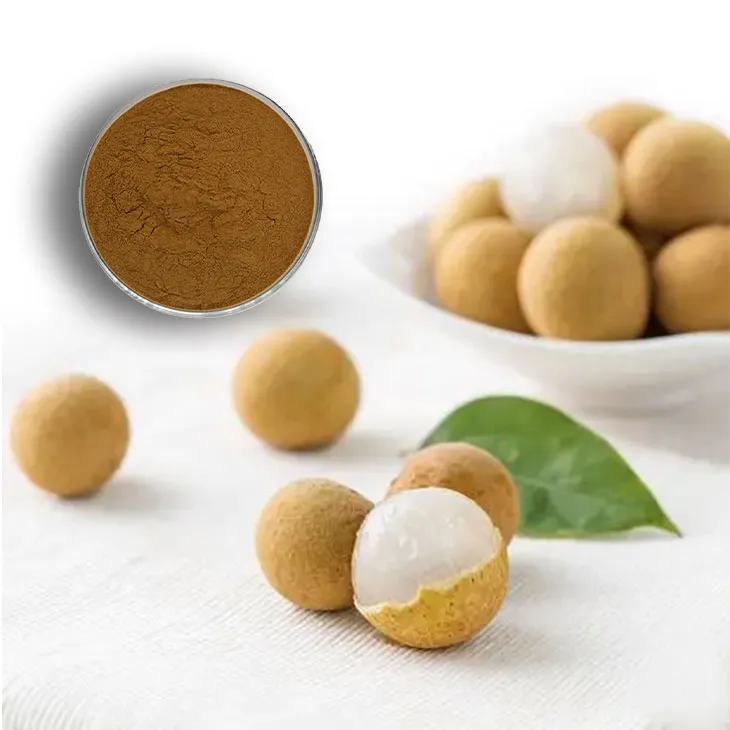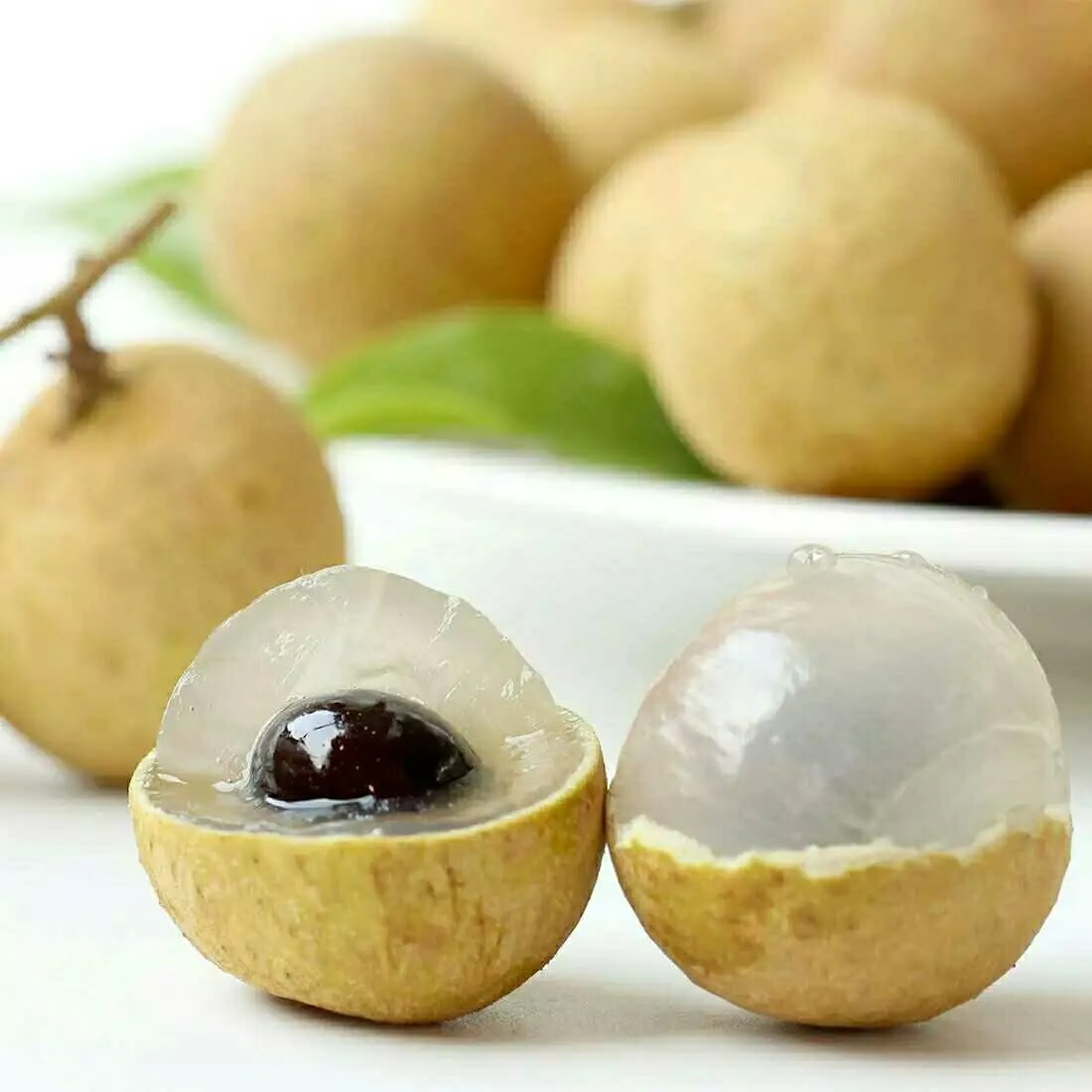- 0086-571-85302990
- sales@greenskybio.com
The Optimal Bioavailability of Longan Extracts.
2024-12-01

Introduction
Longan, known as Dimocarpus longan in the scientific community, has been a part of traditional medicine in many Asian countries for centuries. Longan Extracts are rich in various bioactive compounds, such as polysaccharides, phenolic acids, and flavonoids. However, the full realization of its health - promoting benefits depends on its bioavailability, which refers to the proportion of a substance that enters the circulation and has an active effect. Understanding the factors influencing the bioavailability of Longan Extracts is crucial for maximizing its potential in the field of health and nutrition.

Components in Longan Extract and Their Interaction with the Body
Polysaccharides
Longan polysaccharides are one of the major components in longan extracts. These polysaccharides have complex structures and are believed to have immunomodulatory effects. When consumed, they need to be broken down into smaller units to be absorbed by the body. In the digestive tract, certain enzymes start the process of hydrolysis. However, the molecular weight and chemical bonds within the polysaccharides can affect the efficiency of this breakdown. For example, high - molecular - weight polysaccharides may be more difficult to break down compared to those with lower molecular weights. Once absorbed, they can interact with immune cells in the body, such as macrophages and lymphocytes, to enhance the immune response.
Phenolic Acids
Phenolic acids in longan extracts, like caffeic acid and ferulic acid, possess antioxidant properties. These compounds can scavenge free radicals in the body, protecting cells from oxidative damage. In terms of bioavailability, phenolic acids need to be released from the plant matrix during digestion. The presence of other substances in the longan extract, such as lipids and proteins, can either enhance or inhibit their release. For instance, some lipids may form complexes with phenolic acids, which could potentially improve their solubility and absorption. Once absorbed, phenolic acids can enter cells and interact with antioxidant enzymes, such as superoxide dismutase, to further enhance the antioxidant defense system of the body.
Flavonoids
Flavonoids in longan are also important bioactive components. They include Quercetin, kaempferol, etc. Flavonoids are known for their anti - inflammatory and cardiovascular - protective effects. The bioavailability of flavonoids is influenced by their chemical structure. For example, the glycosylation status of flavonoids can affect their absorption. Glycosylated flavonoids may need to be deglycosylated in the intestine before being absorbed. Moreover, flavonoids can interact with transporters in the intestinal cells. Some flavonoids may be substrates for specific transporters, which can either facilitate or limit their uptake into the cells. Once inside the body, they can modulate various signaling pathways related to inflammation and cardiovascular health.

Processing Techniques and Bioavailability
Extraction Methods
- Solvent Extraction: Solvent extraction is a common method for obtaining longan extracts. Different solvents can be used, such as water, ethanol, or a combination of both. Water extraction is often preferred for polysaccharides as it can effectively dissolve these hydrophilic compounds. However, the choice of solvent can affect the bioavailability of the extracted components. For example, ethanol extraction may be more suitable for phenolic acids and flavonoids as it can break down some of the plant cell walls and release these lipophilic compounds more efficiently. But if the ethanol concentration is too high, it may also denature some of the bioactive components, reducing their bioavailability.
- Supercritical Fluid Extraction: This is a more advanced extraction technique. Supercritical carbon dioxide is often used as the extraction medium. It has several advantages over traditional solvent extraction. It can operate at relatively low temperatures, which helps to preserve the integrity of the bioactive components. Also, it can achieve a high degree of selectivity, allowing for the extraction of specific components with high purity. This can potentially improve the bioavailability of the longan extract as it reduces the presence of unwanted substances that may interfere with absorption.
Processing after Extraction
- Drying: Drying is an important step after extraction. Different drying methods, such as air drying, freeze - drying, and spray - drying, can be used. Freeze - drying is considered one of the best methods for preserving the bioactivity of longan extracts. It involves freezing the extract and then removing the water by sublimation. This process minimizes the damage to the bioactive components compared to other drying methods. For example, air drying at high temperatures may cause the degradation of some heat - sensitive components like flavonoids, reducing their bioavailability. Spray - drying is also commonly used, especially for large - scale production. However, the addition of drying agents and the high - temperature exposure during the process may also have an impact on the bioavailability of the extract.
- Formulation: Formulating longan extracts into different dosage forms can also affect bioavailability. For example, encapsulation can protect the bioactive components from degradation in the stomach and enhance their release in the intestine. Nanoparticle - based encapsulation has shown great potential in improving the bioavailability of longan extracts. The small size of nanoparticles can increase their surface area, facilitating better absorption. Additionally, formulating longan extracts into tablets or capsules with appropriate excipients can also optimize their dissolution and absorption in the body.

The Significance of Bioavailability for Longan - Derived Benefits
Maximizing the bioavailability of longan extracts is of great significance for realizing its full range of health benefits. In terms of immune function, if the polysaccharides in longan extracts can be efficiently absorbed, they can enhance the body's immune response more effectively, helping the body to fight against infections and diseases. For antioxidant benefits, better bioavailability of phenolic acids and flavonoids means that more free radicals can be scavenged in the body, reducing the risk of oxidative - stress - related diseases such as cancer and cardiovascular diseases. In the area of anti - inflammation, improved bioavailability of flavonoids can lead to more effective modulation of inflammatory pathways, alleviating symptoms in inflammatory diseases such as arthritis. Moreover, for cardiovascular health, the bioactive components in longan extracts can have a positive impact on blood pressure, lipid metabolism, and blood vessel function if they are absorbed and utilized efficiently.

Conclusion
In conclusion, understanding the optimal bioavailability of longan extracts is a complex but important task. The components in longan extracts interact with the body in diverse ways, and different processing techniques can significantly influence their bioavailability. By further studying these factors and continuously optimizing the extraction and processing methods, we can unlock the full potential of longan - derived health benefits, making longan extracts a more valuable ingredient in the fields of health and nutrition.
FAQ:
Q1: What are the main components in longan extract?
Longan extract contains various components such as polysaccharides, flavonoids, and phenolic compounds. These components play important roles in the potential health benefits of longan extract.
Q2: How do the components in longan extract interact with the body's systems?
Polysaccharides in longan extract may enhance the immune system by modulating immune cell functions. Flavonoids can act as antioxidants, scavenging free radicals in the body and protecting cells from oxidative damage. Phenolic compounds may also contribute to anti - inflammatory effects and interact with the body's metabolic pathways.
Q3: What are the current processing techniques for longan extract?
Common processing techniques include extraction methods such as solvent extraction (using solvents like water or ethanol), and drying methods to preserve the extract. Ultra - filtration and chromatography can also be used for purification.
Q4: How can processing techniques be optimized to improve bioavailability?
Optimization can involve choosing the right solvent for extraction to ensure maximum extraction of bioactive components. Minimizing the use of harsh chemicals during processing can also help. Additionally, techniques like nano - encapsulation can be used to protect the components and enhance their absorption in the body.
Q5: Why is bioavailability important for longan - derived benefits?
Bioavailability determines how much of the beneficial components in longan extract can be effectively absorbed and utilized by the body. If bioavailability is low, even if longan extract contains many useful components, they may not be able to exert their full potential health benefits.
Related literature
- Bioavailability of Bioactive Compounds from Longan (Dimocarpus longan Lour.): A Review"
- "Optimization of Extraction Techniques for Longan Extract and Its Impact on Bioactivity"
- "Interaction of Longan Extract Components with the Human Body: A Comprehensive Study"
- ▶ Hesperidin
- ▶ citrus bioflavonoids
- ▶ plant extract
- ▶ lycopene
- ▶ Diosmin
- ▶ Grape seed extract
- ▶ Sea buckthorn Juice Powder
- ▶ Beetroot powder
- ▶ Hops Extract
- ▶ Artichoke Extract
- ▶ Reishi mushroom extract
- ▶ Astaxanthin
- ▶ Green Tea Extract
- ▶ Curcumin Extract
- ▶ Horse Chestnut Extract
- ▶ Other Problems
- ▶ Boswellia Serrata Extract
- ▶ Resveratrol Extract
- ▶ Marigold Extract
- ▶ Grape Leaf Extract
- ▶ blog3
- ▶ blog4
-
The best lemon juice powder in nature.
2024-12-01
-
Organic Vitamin K2 Powder Suppliers
2024-12-01
-
Bulk purchase of L - tyrosine.
2024-12-01
-
Vitamin K2 Manufacturers
2024-12-01
-
100% Pure Natural Rutin.
2024-12-01
-
Chinese Citrus Bioflavonoid Suppliers.
2024-12-01
-
Licorice Root Extract Powder
2024-12-01
-
Angelica sinensis extract
2024-12-01
-
melatonin extract
2024-12-01
-
Andrographis Paniculata Extract Powder
2024-12-01
-
Plantain extract
2024-12-01
-
Fenugreek Extract Powder
2024-12-01
-
Agaricus Blazei Extract
2024-12-01
-
Hawthorn powder
2024-12-01
-
Diosmin
2024-12-01
-
Saffron Extract Powder
2024-12-01





















